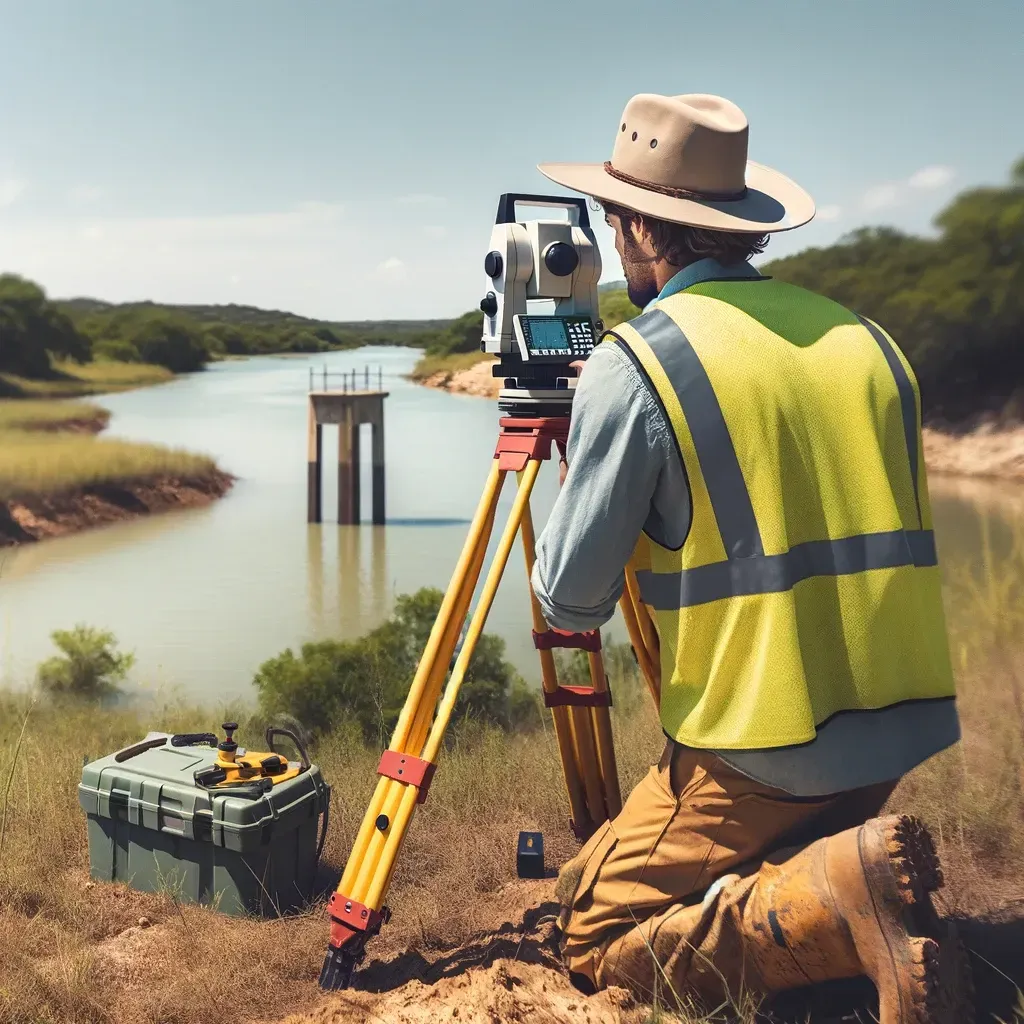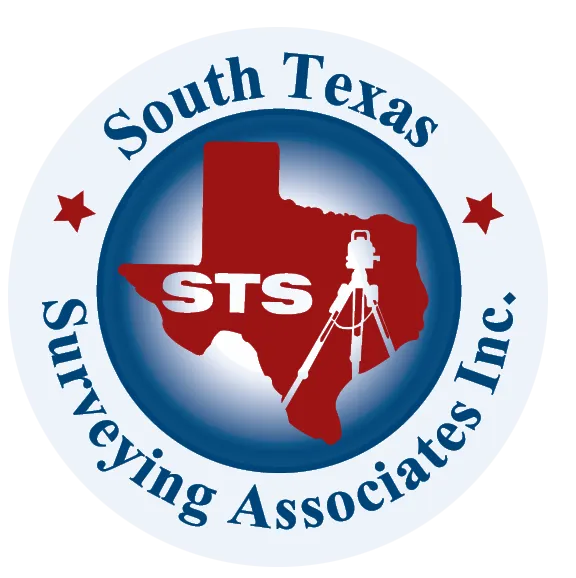Surveying Texas Since 1980 Family Owned, Customer Devoted | Firm #10045400 | 281-556-6918
See Our Latest Blogs

Surveying Texas Commercial Waterfront Properties
"Texas, often referred to as the Lone Star State, is a thriving hub for economic growth and innovation, making it an attractive destination for commercial real estate investment." - Chris Evans
Surveying Texas Waterfront Properties for Commercial Use
Texas boasts an extensive array of waterfront properties, from the Gulf Coast to rivers and lakes scattered across the state. With increasing demand for waterfront commercial developments—such as marinas, resorts, restaurants, and mixed-use projects—accurate land surveys are more critical than ever.
Surveying waterfront properties presents unique challenges that require specialized knowledge and advanced tools. Factors like tidal changes, erosion, and environmental regulations make these surveys far more complex than those conducted on inland properties. However, a precise and reliable survey lays the groundwork for a successful waterfront project.
In this blog, we’ll explore the intricacies of surveying waterfront properties in Texas, the challenges involved, and how developers can leverage surveys to unlock the full potential of these prime locations.
Why Surveying Waterfront Properties Is Crucial for Commercial Use
Waterfront properties offer unparalleled opportunities for commercial developments, but they also come with unique risks and regulatory requirements. Surveys provide critical insights into a property’s boundaries, topography, and environmental characteristics, ensuring the project complies with regulations and avoids costly issues.
Key Benefits of Waterfront Surveys:
Clear Property Boundaries: Establish legal ownership and prevent disputes with neighboring property owners.
Regulatory Compliance: Ensure the project aligns with local, state, and federal regulations governing waterfront developments.
Environmental Protection: Identify sensitive ecosystems and develop plans to minimize environmental impact.
Erosion Management: Assess risks related to erosion and plan for long-term site stability.
Infrastructure Planning: Evaluate access to utilities, roads, and transportation networks.
Without an accurate survey, developers risk delays, penalties, and even project cancellations.
Challenges in Surveying Texas Waterfront Properties
1. Tidal and Water Level Changes
Waterfront properties, particularly those along the Gulf Coast, experience fluctuating water levels due to tides, storms, and seasonal changes. Surveyors must account for these variables when establishing property boundaries and assessing site conditions.
2. Erosion and Sedimentation
Waterfront properties are prone to erosion and sedimentation, which can alter property lines and affect construction plans. Surveys must identify areas at risk and recommend measures to mitigate these impacts.
3. Environmental Sensitivities
Many waterfront properties are home to sensitive ecosystems, such as wetlands, mangroves, or wildlife habitats. Surveyors must navigate complex environmental regulations to ensure the project protects these areas.
4. Navigational Rights and Easements
Waterfront properties often involve navigational rights, such as access to waterways for boats. Surveyors must delineate these rights and account for any easements that may affect the property’s use.
5. Complex Ownership Issues
Waterfront properties may involve overlapping ownership claims, particularly when water boundaries shift over time. Surveys help clarify these issues and establish legal ownership.
Types of Surveys Required for Waterfront Properties
1. Boundary Surveys
Boundary surveys establish the legal property lines, which can be affected by shifting shorelines or tidal boundaries.
2. Topographic Surveys
These surveys map the site’s elevations and natural features, providing data for construction planning and erosion control.
3. Hydrographic Surveys
For properties extending into waterways, hydrographic surveys measure the depth, shape, and features of the underwater terrain.
4. Environmental Surveys
These assessments identify sensitive ecosystems and recommend strategies to minimize environmental impact.
5. ALTA/NSPS Land Title Surveys
For commercial developments, these comprehensive surveys provide detailed information about property boundaries, easements, zoning restrictions, and more.
The Process of Surveying Waterfront Properties
1. Research and Preparation
Surveyors begin by reviewing historical records, such as deeds, plats, and previous surveys, to understand the property’s history and ownership boundaries.
2. Site Inspection
Using advanced tools like GPS, total stations, and drones, surveyors visit the site to collect data on land and water features, elevations, and infrastructure.
3. Hydrographic Data Collection
For properties that include water access, surveyors use sonar and other equipment to map underwater features and assess navigational rights.
4. Environmental Assessment
Surveyors identify protected areas, such as wetlands or wildlife habitats, and document them for regulatory compliance.
5. Reporting and Recommendations
The final step is compiling the data into a comprehensive report that includes maps, elevation data, and recommendations for the development.
Applications of Waterfront Surveys in Commercial Projects
1. Marinas and Boating Facilities
Surveys help determine the best locations for docks, piers, and boat ramps while ensuring compliance with navigational regulations.
2. Resorts and Hospitality
For waterfront hotels and resorts, surveys guide site planning, foundation design, and erosion management strategies.
3. Retail and Dining
Waterfront restaurants and shops benefit from surveys that optimize building placement, parking, and access to scenic views.
4. Mixed-Use Developments
For projects combining residential, commercial, and recreational spaces, surveys balance development goals with environmental protection.
Case Study: Surveying a Texas Waterfront Development
Project Overview:
A developer planned a mixed-use waterfront project along a river near Houston, including retail spaces, residential units, and a marina.
Challenges:
Shifting riverbanks created uncertainty about property boundaries.
Wetlands on the property required environmental protection.
Erosion threatened the stability of planned structures near the waterline.
Surveyor’s Approach:
Conducted a boundary survey to establish legal property lines based on current and historical riverbank data.
Performed a topographic and hydrographic survey to assess elevation changes and underwater terrain.
Collaborated with environmental consultants to map wetlands and propose buffer zones.
Recommended erosion control measures, including retaining walls and vegetation.
Outcome:
The survey data enabled the developer to finalize site plans, secure permits, and begin construction with confidence.
Why Choose South Texas Surveying for Waterfront Projects?
At South Texas Surveying, we specialize in navigating the complexities of waterfront properties. Our team combines decades of experience with state-of-the-art technology to deliver precise and reliable survey data.
Our Services Include:
Boundary and Topographic Surveys: Define property lines and assess elevation changes.
Hydrographic Surveys: Map underwater terrain for docks, marinas, and water-based activities.
Environmental Assessments: Identify sensitive areas and recommend sustainable solutions.
Custom Reports: Provide actionable insights tailored to your project’s unique challenges.
From the Gulf Coast to inland lakes and rivers, we help developers unlock the potential of Texas’s waterfront properties.
Build With Confidence on Waterfront Properties
Waterfront commercial developments offer unparalleled opportunities, but they also come with unique challenges. By conducting thorough and accurate surveys, developers can address these challenges, comply with regulations, and create successful, sustainable projects.
At South Texas Surveying, we’re committed to providing the expertise and precision you need for your waterfront development. Contact us today to schedule a survey and start your project on solid ground—or water.
Delivering Land Surveys with Attention to Detail
George Owens
Commercial Broker

I have worked with many surveying companies, but South Texas Surveying stands out for their exceptional professionalism, attention to detail, and commitment to their clients.
Kim Wexler
Project Manager

Their accurate and thorough surveys make my job a lot easier, their ability to communicate effectively with all parties involved is commendable. I highly recommend South Texas Surveying.
James Cart
Homeowner

As a new homeowner, I was thoroughly impressed with the professional service provided by South Texas Surveying. I high recommend their services to any one buying a home in Houston.
Contact Us
Email: [email protected]
Office Address: 11281 Richmond Ave
BLDG J, Suite 101,
Houston, TX 77082
Office Hours: Mon – Fri 8:00am – 5:00pm
Office Phone Number: 281-556-6918
11281 Richmond Ave
BLDG J, Suite 101,
Houston, TX 77082
Firm Number: 10045400
Resources
© Copyright 2024 South Texas Surveying Associates
